|
|
|
 |
 |
 |
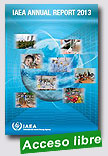 |
IAEA Annual Report for 2013
IAEA, 2014, 121 p.
The IAEA's wide range of technical and scientific activities being carried out in continued support of the needs of its Member States, and a review of developments related to nuclear issues are among the highlights of the recently-released Annual Report for 2013.
The report provides information on developments in 2013 related to the Agency's work and programmes focusing, in a balanced manner, on nuclear technology and its applications,
|
nuclear safety and security, nuclear verification, and technical cooperation.
The yearly report presents the up-to-date situation regarding nuclear power, the application of nuclear related techniques in food and agriculture, human health, water resources management and environment monitoring, the Agency's efforts to strengthen the global nuclear safety culture and enhance nuclear security, and the implementation of Agency safeguards. Also highlighted are the Agency's outreach to its stakeholders and partners in Member States to gain a better understanding of their needs so as to ensure a more efficient and effective response.
The Annual Report is among the main documents submitted to the IAEA General Conference when it convenes in Vienna, beginning 22 September 2014. Other annual information documents on the IAEA's work submitted to the IAEA General Conference include the Nuclear Safety Review, Nuclear Technology Review, the Technical Cooperation Report, etc.
Extraído de: http://www.iaea.org/newscenter/news/2014/ar2013.html
|
 |
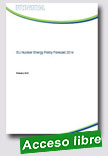 |
EU Nuclear Energy Policy Forecast 2014
FORATOM, February 2014, 12 p.
This year’s European elections will have a major impact on the European Union (EU)’s political agenda and will put EU nuclear energy policy on the back burner for a while. The elections to the European Parliament (EP) will be held in all EU Member States between 22 and 25 May 2014, as decided unanimously by a decision of the Council of the European Union. It will be the eighth Europe-wide election to the European Parliament since the first direct elections in 1979.
|
Nuclear debate in national election campaigns
The election campaign started in February 2014 and nuclear power could be one of the issues debated in some European countries during the campaign. For instance, in the UK, where the Hinkley Point C deal is currently being investigated by the European Commission (EC)’s DG Competition, nuclear new build could be one of the issues at stake. In the Czech Republic, which recently urged the EU together with the UK to adopt a more technology-neutral 2030 energy policy by not fixing any binding renewables target, nuclear power could be part of the elections debate too. Similarly, in Germany, where the government has decided to phase out nuclear power, the “energy transition” both at national and European level could be among the topics discussed in the run-up to the European elections.
Extraído de:http://www.foratom.org/jsmallfib_top/Publications/EU_Nuclear_
Energy_Policy_Forecast_2014.pdf
|
 |
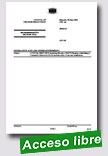 |
2014 Nuclear Safety Directive Amendment
Council of the European Union, 30 June 2014, 35 p.
The European Union (EU) promotes the highest safety standards for all types of civilian nuclear activities, including power generation and waste storage, research and medical uses.
Primary responsibility for the safety of nuclear power plants lies with their operators who are supervised by the national independent regulators. For its part, the Commission plans to put in place more stringent EU‑wide safety rules as a response to the Fukushima accident.
|
The Commission also works closely with countries outside the EU, in particular with its immediate neighbours. In cooperation with the International Atomic Energy Agency (IAEA), it provides assistance to ensure that countries planning to start using nuclear energy meet internationally recognized safety standards and have the necessary safety infrastructure.
In order to keep nuclear installations safe and enhance European leadership on nuclear safety worldwide, the EU amended the 2009 Nuclear Safety Directive on 8 July 2014. The amendment is based on the lessons learned from the Fukushima nuclear accident, EU nuclear stress tests, and the safety requirements of the Western European Nuclear Regulators Association (WENRA) and the International Atomic Energy Association (IAEA).
The new Directive: Strengthens the power and independence of national regulatory authorities Introduces a high-level EU-wide safety objective to prevent accidents and avoid radioactive releases; Sets up a European system of peer reviews on specific safety issues every six years; Increases transparency on nuclear safety matters by informing and involving the public and Promotes an effective nuclear safety culture.
Press release | 2009 Nuclear Safety Directive
Extraído de: http://ec.europa.eu/energy/nuclear/safety/safety_en.htm |
 |
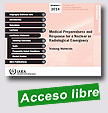 |
Under Article 5.b(ii) of the Convention on Assistance in the Case of a Nuclear Accident or Radiological Emergency, one function of the IAEA is to assist, upon request, a State Party or |
a Member State in developing appropriate training programmes for personnel to deal with nuclear accidents and radiological emergencies. The present training materials are intended to be used for these purposes. These materials are also meant to support the practical implementation of the recommendations put forward in the final report on the International Action Plan for Strengthening the International Preparedness and Response System for Nuclear and Radiological Emergencies.
Member States have the responsibility for establishing and maintaining emergency management programmes that are effective and efficient, and for improving them, as necessary, and State programmes must take into account national, regional and international considerations. As stated in the IAEA Safety Requirements on Preparedness and Response for a Nuclear or Radiological Emergency (IAEA Safety Standard Series No. GS-R-2), which establishes the requirements for an adequate level of preparedness for, and response to, a nuclear or radiological emergency in any State, “On the presentation of medical symptoms of radiation exposure or other effects indicative of a possible radiological emergency, the medical practitioner or other responsible party who recognizes the indications shall notify the appropriate notification point and shall take response actions as appropriate.”
These training materials are intended to address this need.
Extraído de:
http://www-pub.iaea.org/MTCD/Publications/PDF/EPR-Medical_T_2011/PDF/Introduction.pdf
|
 |
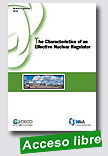 |
The Characteristics of an Effective Nuclear Regulator
Nuclear Energy Agency (NEA), 2014, 34 p.
This regulatory guidance booklet describes the characteristics of an effective nuclear safety regulator in terms of roles and responsibilities, principles and attributes. Each of the characteristics discussed in this report is a necessary feature of an effective nuclear safety regulator but no one characteristic is sufficient on its own. It is the combination of these characteristics that leads to the effectiveness of a nuclear regulatory body. The report provides a unique resource to |
countries with existing, mature regulators and can be used for benchmarking as well as training and developing staff. It will also be useful for new entrant countries in the process of developing and maintaining an effective nuclear safety regulator.
Extraído de: http://www.oecd-nea.org/pub
|
 |
 |
Advisory Material for the IAEA Regulations for the Safe Transport of Radioactive Material (2012 Edition)
IAEA Safety Standards Series, 2014, 450 p.
This Safety Guide provides recommendations and guidance on achieving and demonstrating compliance with IAEA Safety Standards Series No. SSR-6, Regulations for the Safe Transport of Radioactive Material (2012 Edition), which establishes the requirements to be applied to the national and international transport of radioactive material. Transport is deemed to comprise all operations and conditions associated
|
with and involved in the movement of radioactive material, including the design, fabrication and maintenance of packaging, and the preparation, consigning, handling, carriage, storage in transit and receipt at the final destination of packages. This publication supersedes IAEA Safety Standards Series No. TS-G-1.1 Rev. 1, which was issued in 2008.
Extraído de http://www-pub.iaea.org/books/IAEABooks/8952/Advisory-Material-for-the-IAEA-Regulations-for-the-Safe-Transport-of-Radioactive-Material-2012-Edition
|
 |

|
Fusion Energy: Observations on DOE's Cost and Schedule Estimates for U.S. Contributions to an International Experimental Reactor
Government Accountability Office (GAO-US), July 11, 2014, 10 p.
Since the International Thermonuclear Experimental Reactor (ITER) Agreement was signed in 2006, the Department of Energy's (DOE) estimated cost for the U.S. portion of ITER has grown by almost $3 billion, and its estimated completion date has slipped by 20 years. DOE has identified several reasons for the changes, such as increases in hardware cost |
estimates as designs and requirements have been more fully developed over time.
DOE's current cost and schedule estimates for the U.S. ITER Project reflect most characteristics of reliable estimates, but the estimates cannot be used to set a performance baseline because they are linked to factors that DOE can only partially influence. A performance baseline would commit DOE to delivering the U.S. ITER Project at a specific cost and date and provide a way to measure the project's progress. According to DOE documents and officials, the agency has been unable to finalize its cost and schedule estimates in part because the international project schedule the estimates are linked to is not reliable. DOE has taken some steps to help push for a more reliable international project schedule, such as providing position papers and suggested actions to the ITER Organization. However, DOE has not taken additional actions such as preparing formal proposals that could help resolve these issues. Unless such formal actions are taken to resolve the reliability concerns of the international project schedule, DOE will remain hampered in its efforts to create and set a performance baseline for the U.S. ITER Project.
DOE has taken several actions that have reduced U.S. ITER Project costs by about $388 million as of February 2014, but DOE has not adequately planned for the potential impact of those costs on the overall U.S. fusion program. The House and Senate Appropriations Committees have directed DOE to complete a strategic plan for the U.S. fusion program. GAO has previously reported that strategic planning is a leading practice that can help clarify priorities, and DOE has begun work on such a plan but has not committed to a specific completion date. Without a strategic plan for the U.S. fusion program, DOE does not have information to create an understanding among stakeholders about its plans for balancing the competing demands the program faces with the limited available resources or to help improve Congress' ability to weigh the trade-offs of different funding decisions for the U.S. ITER Project and overall U.S. fusion program.
Extraído de: http://www.gao.gov/products/GAO-14-750T
|
 |
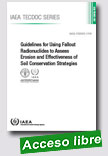 |
Guidelines for Using Fallout Radionuclides to Assess Erosion and Effectiveness of Soil Conservation Strategies
IAEA TECDOC, 2014, 226 p.
Worldwide soil degradation is affecting 1.9 billion hectares and is increasing at a rate of 5 to 7 million hectares each year. About 80% of the world’s agricultural land suffers moderate to severe erosion, and 10% suffers slight to moderate erosion. As a result of climate change and global warming, water erosion risk is even expected to increase. Land degradation by soil erosion has also wider negative ecological and socio-
|
economic impacts and the economic costs of both on-site and offsite impacts of soil erosion in agricultural land have been estimated at $400 billion per year. The current concerns about declining soil productivity, increasing downstream sedimentation, and its related environmental pollution problems in agro-ecosystems, generate an urgent need for obtaining reliable quantitative data on the extent and rates of soil erosion. To efficiently control and mitigate soil losses by erosion and reduce their environmental impacts, soil conservation measures need to be targeted to areas with high erosion and sediment transfer. For this purpose, reliable and comprehensive data on the magnitude and spatial extent of soil redistribution are needed. Traditional monitoring and modelling techniques to quantify soil erosion and sedimentation are capable of meeting some of the information requirements, but they have a number of important limitations.
The quest for alternative techniques of soil erosion assessment to complement existing methods and to meet new requirements has directed attention to a particular group of environmental radionuclides, namely fallout radionuclides (FRNs). These natural and anthropogenic radioisotopic tracers represent effective and valuable tools for the assessment of erosion and deposition within the landscape at several temporal and spatial scales. The use of FRNs can complement and in some cases even substitute conventional measurements to evaluate erosion and sedimentation processes for developing and improving land management and soil conservation measures.
Extraído de: http://www-pub.iaea.org/MTCD/Publications/PDF/TE-1741_web.pdf
|
 |
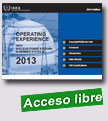 |
Operating Experience with Nuclear Power Stations in Member States in 2013 - 2014 Edition (CD-ROM)
IAEA, 2014, s. p.
This report is the forty-fifth in the IAEA’s series of annual reports on operating experience with nuclear power stations in Member States.
As with previous years, in addition to annual performance data and outage information, the report contains a historical
|
summary of performance and outages during the lifetime of individual plants and figures illustrating worldwide performance and statistical data. In order to provide enhanced features such as data searching and analysis, the report has been published electronically on a CD-ROM since 2006. The intent behind this report and all related Agency publications is to provide a useful tool for everyone concerned with nuclear power. Suggestions and corrections from readers would be most welcome.
Extraído de:
http://www.pub.iaea.org/MTCD/Publications/PDF/OPEX_2013_CD_
web/PDF/OPEX_2013.pdf
|
 |
|

|
Environmental Standards for Uranium Fuel Cycle Facilities: Advance Notice of Proposed Rulemaking (ANPR)
Environmental Protection Agency (EPA) - US, January 23, 2014, 19 p.
This Advance Notice of Proposed Rulemaking (ANPR) requests public comment and information on potential approaches to updating the Environmental Protection Agency’s
‘‘Environmental Radiation Protection Standards for Nuclear Power Operations’’ (40 CFR part 190). These standards,
|
originally issued in 1977, limit radiation releases and doses to the
public from normal operation of nuclear power plants and other uranium fuel cycle facilities—that is, facilities involved in the milling, conversion, fabrication, use and reprocessing of
uranium fuel for generating commercial electrical power. These standards were the earliest radiation rules developed by EPA and are based on nuclear power technology and the understanding of radiation biology current at that time. The Nuclear Regulatory Commission
(NRC) is responsible for implementing and enforcing these standards.
Extraído de: http://www.gpo.gov/fdsys/pkg/FR-2014-02-04/pdf/2014-02307.pdf
|
| |
| |
|
|
| |
| |
|
|
| |
|
|
|
| |
|
|
|
| |
|
|
|
|
|
